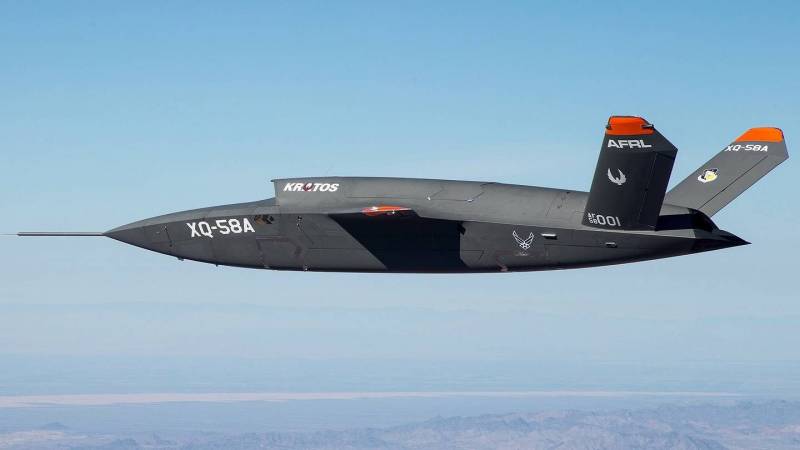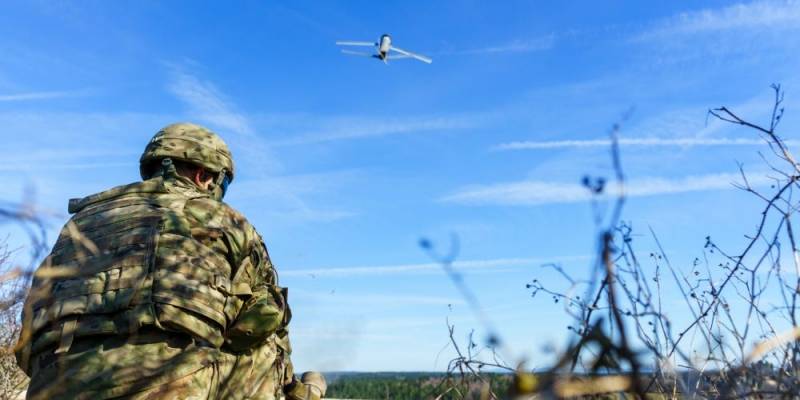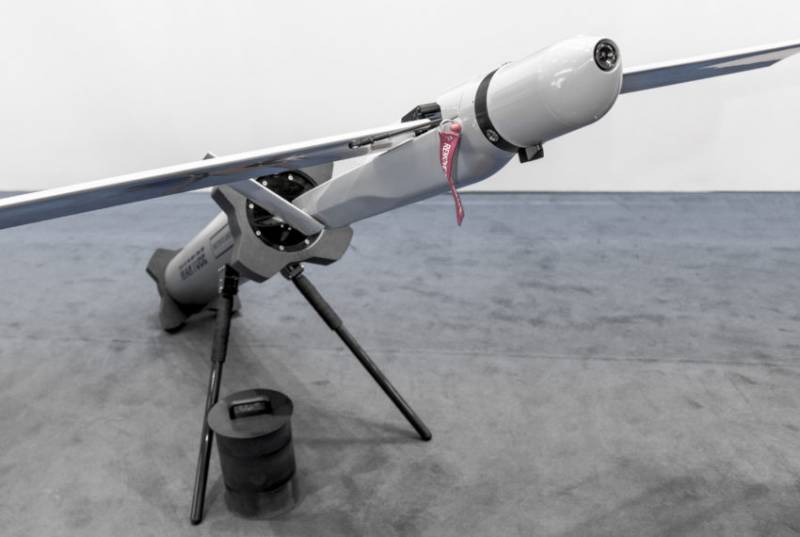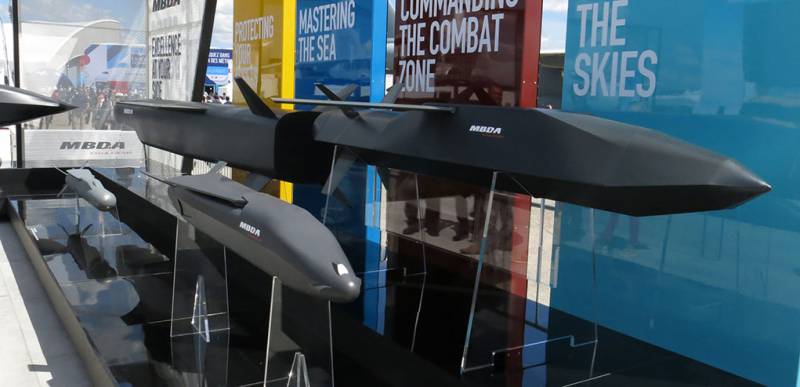Creating a swarm. The next level of autonomous warfare

Kratos demo XQ-58A Valkyrie completed its first flight on March 5, 2019 over the Yum training ground
The armed forces are constantly striving to gain superiority over opponents, in connection with which considerable efforts are directed at the massive deployment of "swarm" autonomous air-based solutions. Consider the latest Western programs to develop unmanned aids capable of performing various tasks, including reconnaissance and information gathering and high-precision strikes.
Currently, there is a steady development of the concept of carrying out sweeping operations from the air, land and sea with the use of many "uninhabited" systems, since in order to defeat opponents, the armed forces of many countries pay great attention to the deployment of advanced autonomous technologies. However, the development of such technologies at the moment is mainly focused on air swarms and it is unlikely that in the near future they will have a significant impact on the outcome of military operations.
Nevertheless, the use of swarms of air, ground, surface and underwater autonomous platforms forces the military to solve extremely complex problems of ensuring the functioning and financing of this technology, despite its relatively recent appearance.
For example, according to Secretary of Defense Gavin Williamson, speaking at the Royal Institute for Defense Research a year ago, the British Department of Defense Transformation Fund “has been tasked with developing swarm squadrons of networked dronescapable of confusing and stunning enemy air defenses. We hope the technology will be ready for deployment by the end of this year.”
High ranks from the US MTR Command agree in principle with this position. “The combination of unmanned systems working on a common task remains an integral part of the Command roadmap for its promising concept,“ Special Applications for Special Environments, ”said the program director for aircraft-type aircraft.
His comment is quite consistent with the statements of the Command representatives, which speak of how swarm technologies could support the “tactical information awareness” of special units in a combat situation. The Command Concept under the designation NGIA (Next Generation Information Awareness) provides for the integration of “remote biometric and technical sensors, an advanced data architecture and analytical materials to complement traditional means of collecting information on enemy territory.”
The Command representative explained the various principles of combat use, including how swarms drones vertical takeoff and landing could support the NGIA concept. Among other principles under consideration for the combat use of the new technology is the deployment of UAVs from a forward position to conduct visual, sound and electromagnetic reconnaissance, and thereby not endanger special forces, on whose training large sums of money were spent.
He also spoke about the Command’s desire to create a consortium of “best industrial partners” capable of developing a solution for swarming UAVs and putting it into practice over the next six years.

Aerovironment u Kratos Signs Agreement for Supply of Switchblade UAVs for Various Remote Controlled Carriers, including Kratos MQM-178 Firejet
Continuous activity
Any operational use of swarm solutions can begin before the NGIA concept is implemented. US government is already implementing various programs aimed at using closely related technologies.
Programs are already being implemented, such as OFFSET (Offensive Swarm-Enabled Tactics - offensive tactics with swarm support) of the Office of Advanced Defense Research DARPA, TOBS (Tactical Offboard Sensing - tactical external surveillance) of the US Air Force and LOCUST (Low-Cost UAV Swarming Technology - low-cost technology swarm UAV) US Navy.
The TOBS concept is based on the AC-130J Ghostrider fire support aircraft, capable of launching several Area-I ALTIUS (Air-Launched, Tube-Integrated Unmanned System) production unmanned aerial vehicles manufactured by Area-I in order to provide weapon systems of the carrier aircraft with information about potential targets.
The U.S. Air Force was unable to provide details on the TOBS program, but industry sources said that ALTIUS drones are equipped with thermal imaging and optoelectronic cameras and a data transmission channel, which provides guidance for the Ghostrider aircraft weapons system. The TOBS concept allows the Ghostrider to fire at targets in the most difficult weather conditions.
The project of the US Air Force under the name LOCUST focuses on the joint work of up to 30 Coyote type aircraft drones in support of the tasks of collecting information, monitoring, target designation and reconnaissance. As an alternative platform for the LOCUST program, the MIT Perdix UAV is also considered.
The DARPA Office held its latest demonstration as part of the OFFSET project in June 2019. The OFFSET concept is expected to enable collaboration of up to 250 UAVs and the integration of automatic ground based vehicles (AHA) into a single network.
The June Fort Benning demonstration, the second of six planned, illustrates the concept that a network of drones and ground-based vehicles performs reconnaissance missions in settlements with high vertical structures, narrow streets and small viewing angles. According to DARPA, Lockheed Martin and Charles River Analytics, as part of the OFFSET program, were tasked with "creating the architecture of a swarm system in the form of a realistic gaming application built into physical autonomous platforms."
This activity also aims to define “adaptive, complex, collective behavior with the aim of improving information exchange, decision making and interaction with the environment so that UAVs can seamlessly interact, influence each other and draw correct logical conclusions”.
Meanwhile, according to Dynetics, the general contractor for the Gremlins project, at the end of 2019, the third development phase was completed. The aim of the project is to launch the S-130 from a transport aircraft and return the “flocks” of Gremlin aircraft to it. The Gremlins program, a concept developed by the DARPA Office, provides for the deployment of reusable drones capable of performing dispersed air operations in difficult combat situations.
A Dynetics statement said that “Gremlin drones are launched from existing aircraft outside the range of enemy air defense systems. After completing the task, the S-130 aircraft takes the Gremlin drones back on board and transports them to the base, where they quickly recover and are sent back to flight. ”
The program involves Sierra Nevada Corporation, Airborne Systems, Applied Systems Engineering, Kutta Technologies, Moog, Systima Technologies, Williams International and Kratos Unmanned Aerial Systems.
Technological solutions
According to Kratos CEO Steve Fendley, hundreds, if not thousands of drones will be able to take part in swarm operations in the future.
Fendley told how UAV swarms in the future will be able to interact with the goal of fulfilling an unlimited number of strike and defensive tasks through independent decision-making at the "mass level".
“Reliability increases exponentially if you have a large number of devices performing a particular task,” Fendley explained, noting that the loss of one or more UAVs in a large swarm of systems will not negatively affect the mission.
Fendley also drew attention to the fact that the swarms of UAVs can be networked via satellite communications, this allows aircraft, if necessary, to exchange data outside of direct line of sight.
But at the same time, the potential of swarm UAVs has not yet been fully realized, despite the presence of “hundreds” of technological programs in the United States and other countries.
The use of artificial intelligence (AI) and machine learning in the processes of making decisions by drones and ensuring the distribution and modification of cognitive decision-making cycles are areas that still need to be carefully studied. According to Fendley, “research in these areas is incredibly popular right now,” but AI software must still be fully integrated and optimized in most swarm displays. UAV swarm displays today are more likely based on logic than on AI. ”

WB Electronics is exploring the potential use of its drones and barrage of ammunition, including launched from the pipe Warmate
Last May, as part of its swarm development roadmap, Kratos announced a strategic partnership with Aerovironment-based drone manufacturer. This cooperation is aimed at developing the concept "Integrated capabilities of highly effective tactical UAVs and tactical missiles." She plans to deploy the Aerovironment Switchblade tactical missile launcher system through high-speed and larger unmanned carrier vehicles, including the Kratos MQM-178 Firejet. 3 meter Firejet media originally created as a comprehensive reset training tool weapons, is a small copy of the target drone BQM-167A Subscale Aerial Target, standing on the supply of the US Air Force.
Alternative carriers also include other Kratos drone drone: UTAP-22 Mako and XQ-58A Valkyrie.
Developed in 2015, the Mako 6,13-meter jet carrier is capable of delivering UAV swarms to the site and coordinating their actions, correcting their tasks and sending information to the ground control station. On January 23, 2020, the fourth successful flight of the XQ-58A unmanned aerial vehicle was conducted at the Yuma training ground. The tests were carried out as part of the program of the US Air Force Research Laboratory for an inexpensive low cost Attritable Strike Demonstrator (LCASD).
During the tests, the multi-tasking and runway-independent XQ-58A aircraft completed all its tasks, including flying at high altitude and collecting data in real conditions. Fendley said that the first carrier flights with Switchblade UAVs should be carried out in early 2020.
Such a bundle can significantly expand the operational efficiency of the Switchblade jet apparatus, which has a maximum range of 20 km when operating in single mode. “In combination with the carrier, the range of the Switchblade will increase by another 270 km if you want to return the device, and 540 km when completing the task one way,” Fendley said, noting that each Firejet can carry up to four Switchblades. “Traditional swarms are easier to implement using small systems, and we intend with Firejet to start moving towards swarm concepts.”
Swarm opportunities
Kratos also participates in the DARPA Management Gremlins program, which can be the foundation of dozens of swarm-type concepts, including "deploying from the air and returning a large number of UAVs."
At the end of 2019, Kratos and the DARPA Office carried out their first flight from the C-130 aircraft, which was not yet disclosed, as an intermediate solution between the Firejet and 167A. This carrier, which does not have a designation, is characterized by folding wings, which allows it to be transported in the cargo compartment of the S-130 aircraft.
After completing the task, carriers return back to the cargo compartment using a technology reminiscent of air refueling. This allows the C-130 aircraft to “dock” with the carrier to return it to the compartment and move it to the rack for storage for reuse.
Kratos is also developing Wolf Cancer technology for UAV swarm operations. As part of the Wolf Pak concept, communication technology is being studied that will allow multiple air systems to be integrated into a high-frequency network and thereby improve the quality of data exchange.
Wolf Pak technology also allows the swarm to adapt and reconfigure in decentralized mode, providing the swarm of drones with the ability to fly at a predetermined distance from each other. This software is developed at the request of an undisclosed customer from the US Army. No further details were provided, although industry experts suggest that it can be used to support a number of operational requirements, from intelligence to target designation.
Wolf Pak's software, currently rated by the customer, operates on ultra-wideband communication channels that reduce the electromagnetic signature of drones when using a single control station.
Kratos said the Wolf Pak solution appoints a “leader” who remotely or autonomously controls the rest of the swarm. The system is also redundant; swarm operation is not affected by shutdown or damage to an individual drone. Each UAV works in a swarm on its own integrated software, which avoids conflicts with drones and other obstacles.
According to Kratos, to date, the software Wolf Pak is able to control up to 10 UAVs in one swarm. Aircraft can also disconnect themselves from the network for individual operations, after which they can again connect to the swarm. Fendley said:
Kratos uses a yet-unnamed autonomous system to support its ongoing demo programs and provide a common interface with swarm UAVs that can be adapted to integrate specific types of aircraft. It includes a data channel for remote management and control; additional communication channel between devices flying in close proximity; Autopilot software to provide “basic” flight performance; as well as a target computer for higher-level decision making. The technology also includes AI software developed by Kratos and other unnamed civil society partners.
- noted Fendley.
Meanwhile, the European manufacturer of MBDA missiles at the air show in Paris in the summer of 2019 presented several concepts and systems in support of UAV swarm operations.

As part of the Future Air System concept, MBDA is actively exploring swarm opportunities. She developed several models of unmanned vehicles, which were presented at the Paris Air Show
Swarm delivery
The representative of the company MBDA said that they are actively developing their own concept of the Future Air System and its component - swarm capabilities. In particular, it includes the delivery of a swarm of UAVs by the so-called remote carrier (Remote Carrier), which will be "compact and inconspicuous" and will be able to work together with other platforms and weapons.
“As threats evolve and complexity increases, access denial strategies will need to create air superiority locally and temporarily,” the company said in a statement. “In these lightning-fast operations, the executive elements tied to the network will occupy a significant part in the“ battle cloud ”, exchanging tactical information and coordinates of targets in real time with platforms and other network nodes in order to achieve the desired impact efficiency.”
MBDA calls its remote carriers launched from combat and transport aircraft and surface ships "platform and weapon expanders that they accompany."
According to the company’s representative, the “remote media” project includes network infrared and radio-frequency sensors with the function of data fusion and automatic target identification in difficult situations; threat detection features; and the development of advanced planning tools and decision-making tools.
The specific systems studied by MBDA have tactical strike capabilities with "compact, networked weapons that are used outside the reach of weapons, capable of exerting a highly accurate impact and disorganizing enemy defenses due to group and swarm behavior."
The Polish company WB Electronics is also exploring the swarm possibilities for its drones and ammunition (BB). The company spoke about future plans for autonomous platforms operating in swarm configurations. According to Martin Masievsky, director of WB Electronics, the future operational success of these autonomous technologies will be based on the functionality that they can provide to the armed forces.
For example, this is the ability of the AP and UAV to fly in the absence of a GPS signal and exchange messages with other manned and unmanned aircraft during the performance of swarm missions.
Masievsky said that WB Electronics is developing swarm technologies to meet the needs of the armed forces in uninhabited systems, especially with support for operations in combat conditions, but at the same time could not provide more detailed information. He noted that WB Electronics is working to network up to six Warmate LM ammunition, although this project remains in the early stages of development. He also voiced his vision of the swarm capabilities of LM, which provides for the use of up to 20 drones tied into a single network for reconnaissance and information gathering.
Today, most of the swarm technology is being developed for airspace. However, long-term roadmaps can be supplemented by similar capabilities for surface and ground vehicles.
“These opportunities are not yet developed much. However, now business decisions are focused on aircraft, ”said Masievsky. “But with the development of technology, with increasing levels of autonomy and the emergence of artificial intelligence to ensure operations in three-dimensional space, it will become possible to transfer them to the surface or ground sphere.”
In addition to the ability to launch and return flocks of autonomous vehicles, users must also be able to remotely control a large number of drones, ground robots or surface vehicles.
Operators should be provided with next-generation ground control software and end-user devices in order to optimally manipulate swarms while reducing the cognitive load on personnel. It is worth noting here the company Pison, which is developing gesture control technology in the interests of the US MTR. It allows operators to control the operation of UAVs with hand gestures due to the device worn on the wrist. According to the company, the next stage of the demonstrations is scheduled for June 2020.
Information